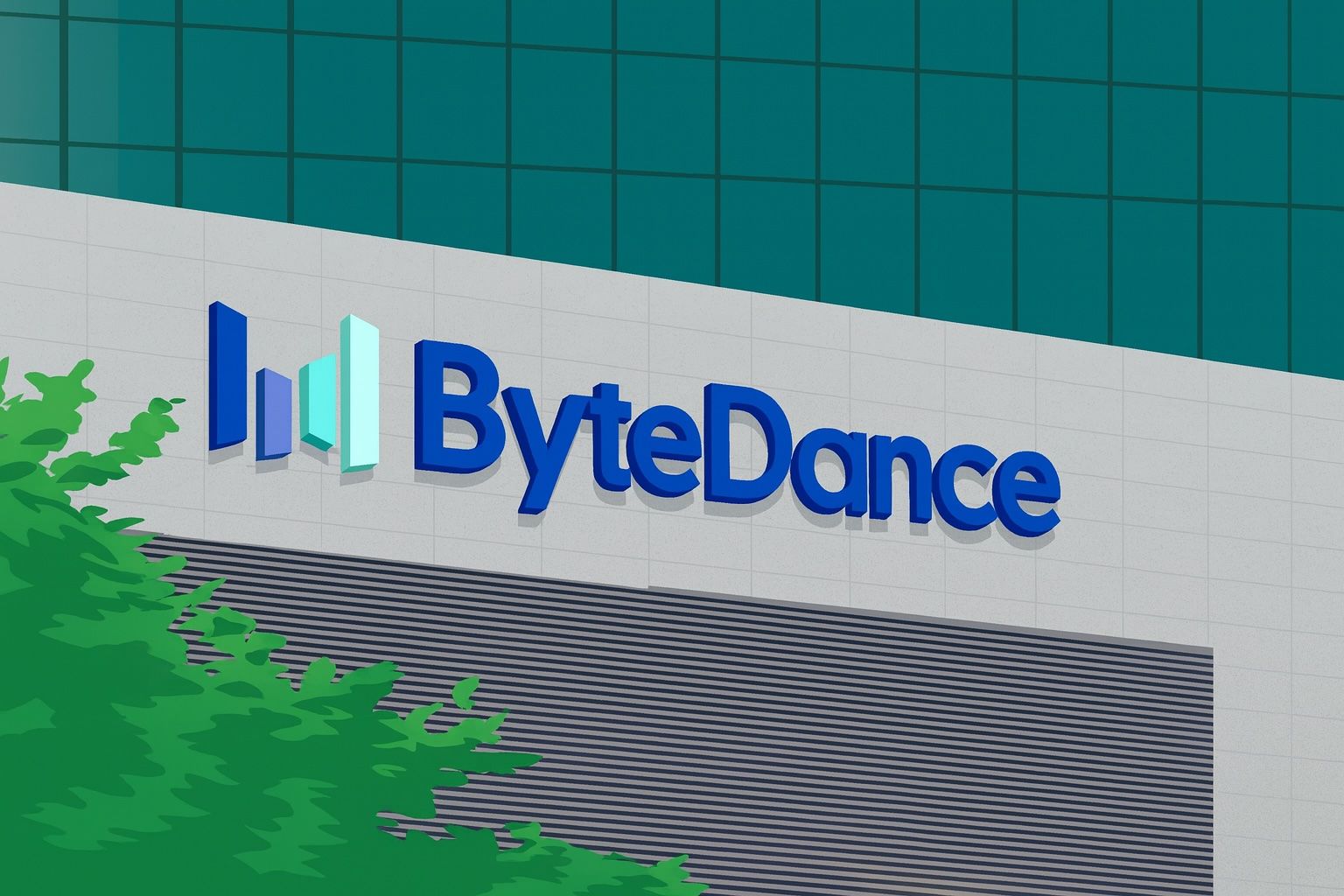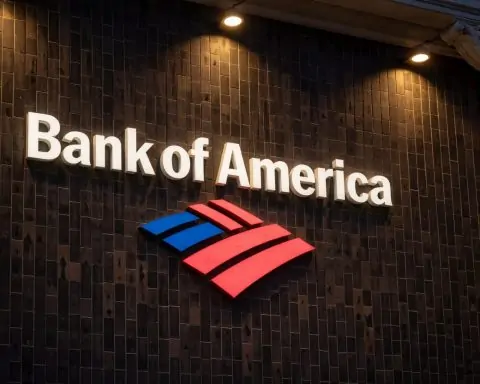- ByteDance (TikTok’s parent) is still private: There’s no ByteDance stock ticker, as IPO plans were shelved after regulators blocked a 2021 listing [1]. You can’t buy ByteDance in a normal brokerage account.
- Indirect investment is possible: Accredited investors can seek ByteDance shares on private secondary markets like Hiive or Forge [2] [3]. For everyday investors, buying stock in ByteDance backers – e.g. KKR or SoftBank – offers very partial exposure [4] [5].
- Major funds have stakes: Global investors including KKR, SoftBank, Sequoia Capital, General Atlantic, and Hillhouse own about 60% of ByteDance [6]. Their investments helped ByteDance grow into one of the world’s most valuable unicorns (~$330 billion valuation as of Aug 2025).
- Booming business: ByteDance’s revenue has exploded – it’s on track for nearly $200 billion in 2025 annual revenue, making it the world’s largest social media company by sales (even ahead of Meta) [7]. The company is profitable overall, though heavy investment in AI and global expansion has trimmed margins.
- TikTok’s U.S. drama nearing resolution: A U.S. law demanded ByteDance divest TikTok’s American operations by Jan 2025 or face a ban [8]. After several extensions, a deal is in the works to spin off TikTok U.S. into a joint venture with American investors (Oracle, Silver Lake, etc.), while ByteDance keeps a minority stake and licensing fees [9] [10]. This compromise appears to satisfy both Washington and Beijing, avoiding a worst-case scenario ban [11].
- IPO on the horizon? Don’t count on a ByteDance IPO imminently. Management has given no timetable for going public [12] [13]. Analysts speculate an IPO will wait until political risks (like the TikTok saga) ease and Chinese regulators give a green light. Any future listing – potentially in Hong Kong or New York – could be massive, but for now ByteDance remains private.
How Can You Invest in ByteDance in 2025?
ByteDance is not publicly traded. Unlike Meta or Alphabet, you cannot buy ByteDance stock on any exchange as of 2025. The Beijing-based owner of TikTok and Douyin remains a private company, and its earlier plans to go public were put on ice after China’s government blocked a 2021 IPO attempt [14]. Since then, ByteDance’s management has refrained from any new IPO push [15], especially amid geopolitical scrutiny. For everyday investors, this means there is no direct ticker symbol for ByteDance or TikTok, and no straightforward way to “buy TikTok stock” in a standard brokerage account.
However, there are indirect ways to gain exposure to ByteDance’s growth:
- Pre-IPO Marketplaces (Accredited Investors): Wealthy or institutional investors can seek ByteDance shares on private secondary markets. Platforms like Hiive and Forge list ByteDance equity from early investors or employees looking to sell. For example, multiple ByteDance share listings were available recently around ~$180–$200 per share (implying a ~$330 billion valuation) [16] [17]. These marketplaces typically require accredited investor status (high income or net worth) [18]. Buying through them lets one own a sliver of ByteDance before any IPO, though liquidity is limited and due diligence is essential.
- Invest via ByteDance’s Major Investors: Another route is buying stock in public companies that hold stakes in ByteDance. Two notable ones are KKR (KKR) and SoftBank Group (SFTBY), which participated in ByteDance’s funding rounds. KKR, a U.S. private equity firm, joined ByteDance’s Series E in 2018 and a 2020 round; its total $750 million invested grew to an estimated $2.1 billion stake at current valuations [19]. SoftBank’s Vision Fund likewise invested hundreds of millions and still holds roughly $1.2 billion worth of ByteDance (after selling some shares in 2023) [20]. Buying KKR or SoftBank stock thus gives indirect ownership of ByteDance’s success. Be aware: ByteDance is just a tiny piece of these giants (≈1% of SoftBank’s portfolio and <2% of KKR’s [21] [22]). So, your investment in them is mostly tied to their other holdings and performance.
- Potential TikTok Buyers or Partners: ByteDance’s ongoing negotiations have also put a spotlight on Oracle (ORCL). Oracle is a publicly traded tech firm that became TikTok’s cloud partner and is a leading bidder to acquire TikTok’s U.S. arm. If a deal closes, Oracle could benefit from TikTok’s growth in the U.S. (or at least remove the uncertainty over TikTok’s fate). Some investors see Oracle as a proxy play on TikTok [23]. Again, TikTok would be just a small factor in Oracle’s overall business (which spans databases, enterprise software, cloud services, etc.), so invest only if you believe in the bigger company.
- The Thematic Approach – Social Media Funds: While you can’t invest in ByteDance directly, you can invest in the broader social media and tech space that it inhabits. ByteDance’s closest competitors like Meta Platforms (META) (owner of Facebook/Instagram) or Snap Inc. (SNAP) are publicly traded. Some exchange-traded funds (ETFs) or mutual funds focus on social media or Chinese tech firms and may include companies affected by TikTok’s rise. This approach doesn’t give you ByteDance ownership, but if you’re bullish on TikTok-style engagement driving industry growth, a basket of social media stocks could be a proxy. Just note that TikTok’s success can be a double-edged sword: it expands the overall digital media pie, but it can also steal market share from rivals like Meta or Snap.
In summary, owning ByteDance today requires creativity. You either need access to private equity markets or you invest in the publicly traded proxies (its investors or competitors). For most retail investors, sticking to well-known tech stocks or funds may be more practical than chasing pre-IPO shares. But as ByteDance’s influence grows, expect more interest in finding ways to “own a piece” of this tech titan ahead of any future IPO.
ByteDance’s Business Health and Market Position in 2025
ByteDance isn’t just another startup – it’s a global behemoth at the intersection of social media, entertainment, and technology. In 2025, the company’s business is thriving by the numbers, even outpacing some Silicon Valley heavyweights:
- Surging revenue: ByteDance’s financial growth has been spectacular. The company is now generating revenue at an annual run-rate approaching $200 billion – a figure that exceeds the revenue of Facebook’s parent, Meta Platforms [24]. In Q2 2025 alone, ByteDance pulled in about $48 billion in revenue [25] [26], up ~25% year-on-year, thanks to robust advertising demand. This makes ByteDance the world’s largest social media company by revenue [27]. For context, Instagram-and-Facebook-owner Meta saw about $42 billion in sales in the same quarter [28]. Both firms are growing over 20% annually, but ByteDance has leapfrogged Meta in the top-line race.
- Healthy profits (with a caveat): Despite being privately held, ByteDance is profitable as a whole, demonstrating strong monetization of its platforms [29]. Its flagship products monetize through advertising, e-commerce, and virtual gifts. In 2024, ByteDance reportedly earned around $33 billion in net profit on $155 billion revenue (21% net margin) [30]. However, not every piece of the empire makes money. TikTok’s U.S. operations, for example, have been loss-making to date [31] – the company has been subsidizing its rapid global expansion (e.g. investing heavily in TikTok Shop e-commerce growth and AI infrastructure) [32] [33]. The Chinese side of the business (Douyin, Toutiao, etc.) is more mature and profitable, while international ventures are still in ramp-up mode. Overall, though, ByteDance has a strong cash position – so strong that it has funded repeated employee stock buybacks out of its own pocket (unlike many startups that need outside funding for liquidity) [34] [35]. This financial flexibility signals healthy margins and cash flow at the parent-company level.
- Massive user base & engagement: ByteDance’s crown jewel TikTok counts over 1.5 billion monthly active users globally (across TikTok and its Chinese twin app Douyin), placing it among a rarefied club of super-apps [36]. TikTok achieved viral growth – reaching 100 million users in just 9 months [37] – and continues to be a social media phenomenon, especially with younger demographics worldwide. In China, Douyin dominates short-form video, boasting hundreds of millions of daily users. This scale gives ByteDance a formidable advertising platform and, increasingly, an e-commerce channel through in-app shopping and live-stream sales. It’s not just TikTok/Douyin either: ByteDance also owns products like Toutiao (a popular news aggregator), CapCut (a video editing app with global uptake), Lark (enterprise collaboration), Xigua Video, Nuverse (gaming), and more [38]. This diversified app portfolio reinforces its market position, though TikTok/Douyin remain the core revenue engines.
- Market valuation vs. peers: In private markets, ByteDance’s latest internal valuation is around $330 billion (based on an employee share buyback in late 2025) [39] [40]. That is huge – by far the world’s most valuable venture-backed tech company – yet it’s modest compared to public peers. For instance, $330B is less than one-fifth of Meta’s ~$1.9 trillion market cap [41]. In other words, investors value ByteDance at a significant discount relative to an established giant like Meta. Why? Analysts attribute the gap largely to political and regulatory risks [42] [43]. ByteDance’s ownership (a Chinese company with a globally popular app) invites scrutiny that doesn’t apply to U.S. firms. The threat of a TikTok ban or forced divestment (until recently) weighed heavily on ByteDance’s perceived value [44]. Additionally, as a private firm, ByteDance’s stock lacks the liquidity and transparency of a public company, which also tends to lower its market multiples [45] [46]. Even so, at $330B, ByteDance sits in the upper echelon of global tech enterprises by valuation, and any successful resolution of its regulatory issues could narrow that valuation gap.
- Competitive landscape: ByteDance essentially created and dominates the short-video social media genre, but it faces heavyweight competitors across different fronts. In social media, its rivals include Meta (with Instagram Reels competing with TikTok), YouTube (shorts), Snapchat, and emerging platforms. In China, Tencent (WeChat, video services) and Kuaishou challenge Douyin’s dominance. Yet ByteDance has proven adept at innovating with AI-driven content recommendation – TikTok’s famed “For You” algorithm is still seen as the gold standard for user engagement. That said, competition is fierce: for every ad dollar ByteDance earns, rivals like Meta are fighting to keep theirs. ByteDance’s rapid growth also puts it under the glare of regulators and incumbents – for example, Meta has openly cited TikTok as a formidable threat to its business. Beyond social media, ByteDance is now encroaching into artificial intelligence and other domains, putting it in competition with AI-focused firms.
In sum, ByteDance’s business health is robust – by revenue and usage metrics, it’s a juggernaut with few equals. Its dominance in short-form video and social commerce, especially combined with China’s huge market, gives it a strong foundation. The main shadow on its position comes from external factors like U.S.-China tensions and regulatory interventions, rather than any fundamental weakness in the business model. ByteDance’s challenge is navigating these geopolitical minefields while continuing to execute on growth.
Latest Developments: TikTok’s U.S. Saga and Regulatory Challenges
No discussion of ByteDance in 2025 is complete without addressing the TikTok U.S. saga, which has dominated headlines and directly impacts ByteDance’s future. Here’s a breakdown of what happened and why it matters for investors:
- U.S. government ultimatum: In 2024, amid rising national security concerns, Congress passed a law requiring ByteDance to divest TikTok’s U.S. assets by January 19, 2025 or face a nationwide ban of TikTok in the U.S. [47]. American officials feared that TikTok’s Chinese ownership could enable data access by Beijing or covert influence on U.S. users [48]. (These fears weren’t new – TikTok was banned on U.S. federal government devices in 2020, and similar bans spread in Europe and U.S. states [49].) The 2024 law, however, raised the stakes dramatically: ByteDance stood to lose the huge American market (TikTok has ~170 million users in the U.S.) if it didn’t comply [50].
- ByteDance makes a deal (in progress): Rather than cut off TikTok entirely, the solution emerging in late 2025 is a forced sale/reorganization of TikTok’s American operations – but one that still involves ByteDance. Negotiations, heavily influenced by the Biden-to-Trump administration transition, led to a framework that has garnered tentative approval from both Washington and Beijing [51]. Under the proposed deal, TikTok’s U.S. business will effectively be split into two entities [52]:
- TikTok U.S. (Data & Algorithm JV): A new joint venture would handle U.S. user data and the app’s core algorithm in the States. This JV is expected to be majority-owned by an American consortium of investors, including Oracle and the investment firm Silver Lake, along with prominent ByteDance backers KKR, General Atlantic, Susquehanna International Group, and Andreessen Horowitz [53]. ByteDance itself would retain a minority ~20% stake in this U.S. entity [54]. Oracle – which already provides cloud infrastructure for TikTok – is slated to play a key role in safeguarding data.
- ByteDance-owned unit: Meanwhile, ByteDance would keep full ownership of TikTok’s global business operations – things like the all-important content recommendation algorithm (licensed to the U.S. JV), international advertising, e-commerce features, and product development [55]. Essentially, the creative and money-making parts of TikTok (outside the U.S.) stay under ByteDance, while data security and U.S. governance shift to the new U.S.-led company.
- Political twists and turns: The road to this deal has been anything but smooth. By late 2024, ByteDance’s legal appeals had failed (the U.S. Supreme Court upheld the divest-or-ban law), and the ban deadline loomed [58]. In January 2025, the incoming U.S. administration (President Donald Trump returned to office) chose to delay the ban’s enforcement instead of immediately cutting off TikTok [59]. President Trump granted TikTok multiple reprieves: first a 75-day pause, then additional extensions into mid-2025 [60] [61]. He publicly stated that U.S. buyers were lined up and kept pushing the deadline back to allow a deal [62]. Some lawmakers criticized these delays, accusing the administration of “flouting the law” and risking national security by letting TikTok’s Chinese ownership linger [63]. Nonetheless, negotiations progressed. By September 2025, Trump signed an order indicating a TikTok sale agreement was ready, valuing TikTok’s U.S. operations around $14 billion [64]. Beijing, which had earlier signaled it would not allow a forced sale that included TikTok’s key algorithms, seemed to accept this joint venture approach as a face-saving compromise [65].
- Latest status (Oct 2025): As of early October 2025, the deal structure outlined above has been agreed in principle and is awaiting finalization. Oracle, Silver Lake, and partners would gain ownership of TikTok U.S., while ByteDance’s founder Zhang Yiming and current CEO Liang Rubo have Beijing’s blessing to proceed under those terms [66]. Regulatory approvals in both countries are expected to move forward, although nothing is final until ink dries. ByteDance’s U.S. employees, who’ve been in limbo, are cautiously optimistic – ByteDance even launched that new $330B buyback partly to bolster morale among staff facing uncertainty [67]. If all goes as planned, the years-long saga will conclude with TikTok continuing in the U.S. under a new structure, rather than a shutdown.
From an investor’s perspective, resolving the TikTok U.S. question is crucial for ByteDance. It removes the existential threat of losing the American market and could unlock plans that were on hold. One expert commentator noted that by avoiding a full disconnect, ByteDance “has avoided the worst outcome” of being completely shut out, and the deal “appears to have the blessing of both Beijing and Washington” [68]. This outcome, while not ideal (ByteDance prefers full ownership, of course), at least preserves TikTok’s massive U.S. user base and monetization potential in a way that still benefits ByteDance financially. It’s a relief for ByteDance’s stakeholders and for any future public offering—since a TikTok ban would have severely dented ByteDance’s value.
However, risks remain. The new arrangement will be delicate – any deterioration in U.S.-China relations could bring renewed pressure on TikTok down the road. And TikTok’s long-term fortunes in America will depend on how well this partnership satisfies security concerns and whether the app can thrive under partly new ownership. Still, for now, ByteDance’s CEO Liang Rubo “has a reason to celebrate” [69]; the company lived to fight another day in the U.S. and can refocus on growth.
Future Prospects and Forecasts for ByteDance
With the TikTok-U.S. drama seemingly nearing a resolution, what’s next for ByteDance? Investors should consider several key areas regarding ByteDance’s financial and strategic future:
- Renewed focus on core business and innovation: Freed from the distraction of geopolitical battles (or at least with a plan to manage them), ByteDance is poised to double down on its strengths. In China and other markets, ByteDance continues to be an “app factory” – leveraging its expertise in AI-driven content to launch new products. Notably, ByteDance is emerging as an artificial intelligence leader. It has invested billions in AI research and infrastructure, reportedly buying vast quantities of NVIDIA chips and building large-scale AI models [70]. The company already operates China’s leading AI chatbot and is developing generative AI tools for image and video creation [71]. This could open new business lines or augment existing ones (imagine more advanced content recommendation, AI-assisted video editing on CapCut, or even enterprise AI services). Analysts believe ByteDance’s AI initiatives are competitive with those of Alibaba and other tech peers [72]. Going forward, we can expect ByteDance to pour resources into AI and perhaps cloud services – areas that could diversify its revenue beyond advertising and entertainment.
- Growth opportunities: ByteDance’s international expansion (outside the U.S. and China) remains a huge opportunity. TikTok usage is still growing in regions like Europe, South America, and Southeast Asia. The company is aggressively trying to replicate Douyin’s success in e-commerce across these markets – for instance, TikTok Shop is expanding in the U.S., UK, and Southeast Asia. While initial results have been mixed (TikTok Shop’s U.S. GMV of $9 billion in 2024 fell short of internal targets [73]), the potential is enormous if TikTok can become a major shopping platform as it is in China. ByteDance is effectively merging social media with online retail, a trend that could unlock new revenue streams and higher user engagement. Additionally, ByteDance might explore other verticals (education tech, gaming, music) either via new apps or acquisitions. Its vast user base gives it a launchpad to enter almost any consumer tech domain.
- Financial forecasts: While precise forecasts are tricky for a private firm, the trajectory suggests continued robust growth. ByteDance managed ~38% revenue growth in 2024 [74]; even if growth moderates, double-digit increases seem likely for the next few years given the secular shift of ad dollars to TikTok and the ramp-up of e-commerce. Some analysts have floated striking comparisons – for example, ByteDance’s revenue in 2025 is set to surpass that of many tech conglomerates, but its valuation (around $330B) implies a low revenue multiple. If political risks abate, there is room for valuation upside: at $330B, ByteDance is valued at roughly 2 times 2024 revenue [75], whereas U.S. social media peers trade at much higher multiples (Meta is ~9.5× revenue) [76]. In simpler terms, ByteDance could be a bargain relative to its scale – if one believes those political discounts will fade over time. Of course, that’s a big “if.” But it suggests that once ByteDance is free to list publicly, its market cap could see a significant re-rating closer to peer levels, potentially adding hundreds of billions in value (assuming no major business downturn).
- IPO outlook: Investors frequently ask, when will ByteDance finally go public? As of late 2025, the honest answer is: not imminently. ByteDance’s leadership has made no promises about an IPO timeline [77]. The company appears content to stay private until conditions are optimal. What might those conditions be? First, a resolution of the TikTok U.S. issue – which is happening now – was a prerequisite. Second, a favorable regulatory environment in China is needed. Recall that Chinese regulators scuttled ByteDance’s previous IPO attempt due to data security concerns [78]. Beijing would likely want assurances about data control and might prefer ByteDance list in Hong Kong or domestically rather than on a U.S. exchange. There have been rumors and speculation: for example, in late 2021 ByteDance was reportedly exploring a Hong Kong IPO [79], and again such talk resurfaced in some reports in 2022. But nothing materialized, likely due to China’s tech crackdown and volatile markets. Now, with tech regulations in China easing somewhat and ByteDance’s growth continuing, analysts say an IPO could be back on the table in the next couple of years – perhaps by 2026 or 2027 – if geopolitical tensions cool off [80]. An eventual IPO could be one of the biggest tech debuts ever. Until then, ByteDance is using internal share buybacks to reward employees and early investors, essentially “going public” on its own balance sheet. This reduces pressure to IPO quickly, since insiders have some path to liquidity.
- Strategic wildcards: There are a few wildcards that could influence ByteDance’s future trajectory. One is regulatory action outside the U.S. – for example, the EU is scrutinizing TikTok on privacy and content moderation grounds, India has already banned TikTok since 2020, and other countries periodically raise concerns. If a major region were to ban or severely restrict TikTok, that would hit ByteDance’s global ambitions. On the flip side, there’s also a possibility of reconciliation: if U.S.-China relations improve, ByteDance might even be allowed to increase its stake in TikTok U.S. or find new American partners, smoothing the way for a unified global platform again. Another wildcard is competition: an emerging platform or shift (say, augmented reality content or a new viral app) could challenge TikTok’s dominance among younger users. ByteDance will need to stay agile to evolving digital trends – something it has done well so far, given its track record of spinning up hit apps.
- Expert views: Financial analysts covering the private market are generally upbeat about ByteDance’s fundamentals but cognizant of the political risk. As Bernstein analysts observed, TikTok (ByteDance’s main asset) could generate up to $25 billion in U.S. revenue in 2025 [81] – a huge opportunity – if it’s allowed to operate freely. ByteDance’s ability to capture that will depend on executing the TikTok U.S. restructuring and keeping users and advertisers on board during the transition. Analysts also frequently cite ByteDance’s technological edge: its recommendation algorithm and AI capabilities give it a moat that competitors struggle to match. One challenge noted is that ByteDance’s valuation has seesawed in private markets – peaking over $400B in 2021, then dipping to around $215B on secondary markets during regulatory crackdowns, before recovering to $300B+ in 2025 [82] [83]. This volatility reflects how sentiment can swing with news cycles. Experts suggest that once ByteDance is past the current hurdles, it could seek a more stable valuation anchor via an IPO or by attracting long-term strategic investors.
Bottom line: ByteDance in 2025 is a company at a crossroads of extraordinary business success and extraordinary external challenges. From an investment standpoint, it’s hard to ignore ByteDance’s scale and growth – the company has entrenched itself in the daily lives of billions and is monetizing that attention effectively. The future likely holds continued expansion in new markets and domains (especially AI). But investors must also watch the geopolitical winds. The next year or two will be pivotal: ByteDance will implement the TikTok U.S. joint venture, which should neutralize the biggest overhang on its value. If that succeeds, we may then see ByteDance tiptoe back toward public markets or new fundraising, this time with more confidence that it won’t be derailed by regulators.
For now, those eager to invest in this tech powerhouse have to be patient or creative, as described above. ByteDance’s story underscores the reality that in today’s interconnected world, even a company with astronomical user metrics and financials can have its fate shaped by politics as much as by profits. All eyes will be on how ByteDance navigates these next chapters – it could define whether investing in “the TikTok empire” turns out to be the opportunity of the decade or a cautionary tale in global tech investing.
Sources: ByteDance investment and business details were compiled from recent financial news and analysis, including Reuters, CNBC, and expert commentary. Key references include Reuters reports on ByteDance’s $330 billion valuation and 25% revenue jump [84] [85], Breakingviews analysis of the TikTok deal structure [86] [87], and stock analysis insights on ByteDance’s investor makeup and pre-IPO investment options [88] [89]. These and other cited sources provide the factual basis for the discussion above.
References
1. stockanalysis.com, 2. stockanalysis.com, 3. forgeglobal.com, 4. stockanalysis.com, 5. stockanalysis.com, 6. stockanalysis.com, 7. stockanalysis.com, 8. www.reuters.com, 9. www.reuters.com, 10. www.reuters.com, 11. www.reuters.com, 12. stockanalysis.com, 13. stockanalysis.com, 14. stockanalysis.com, 15. stockanalysis.com, 16. stockanalysis.com, 17. stockanalysis.com, 18. stockanalysis.com, 19. stockanalysis.com, 20. stockanalysis.com, 21. stockanalysis.com, 22. stockanalysis.com, 23. forgeglobal.com, 24. stockanalysis.com, 25. www.reuters.com, 26. www.reuters.com, 27. stockanalysis.com, 28. www.reuters.com, 29. www.reuters.com, 30. sacra.com, 31. www.reuters.com, 32. sacra.com, 33. sacra.com, 34. www.reuters.com, 35. www.reuters.com, 36. stockanalysis.com, 37. stockanalysis.com, 38. stockanalysis.com, 39. www.reuters.com, 40. www.reuters.com, 41. www.reuters.com, 42. www.reuters.com, 43. www.reuters.com, 44. www.reuters.com, 45. sacra.com, 46. sacra.com, 47. www.reuters.com, 48. stockanalysis.com, 49. stockanalysis.com, 50. www.reuters.com, 51. www.reuters.com, 52. www.reuters.com, 53. www.reuters.com, 54. www.reuters.com, 55. www.reuters.com, 56. www.reuters.com, 57. www.reuters.com, 58. forgeglobal.com, 59. forgeglobal.com, 60. forgeglobal.com, 61. www.reuters.com, 62. www.reuters.com, 63. www.reuters.com, 64. www.reuters.com, 65. www.reuters.com, 66. www.reuters.com, 67. www.reuters.com, 68. www.reuters.com, 69. www.reuters.com, 70. www.reuters.com, 71. www.reuters.com, 72. www.reuters.com, 73. sacra.com, 74. sacra.com, 75. sacra.com, 76. sacra.com, 77. stockanalysis.com, 78. stockanalysis.com, 79. www.reuters.com, 80. stockanalysis.com, 81. www.reuters.com, 82. sacra.com, 83. sacra.com, 84. www.reuters.com, 85. www.reuters.com, 86. www.reuters.com, 87. www.reuters.com, 88. stockanalysis.com, 89. stockanalysis.com









